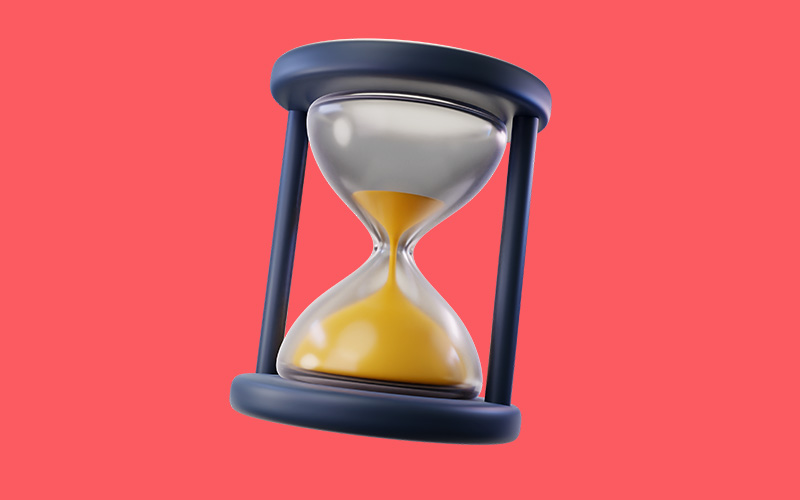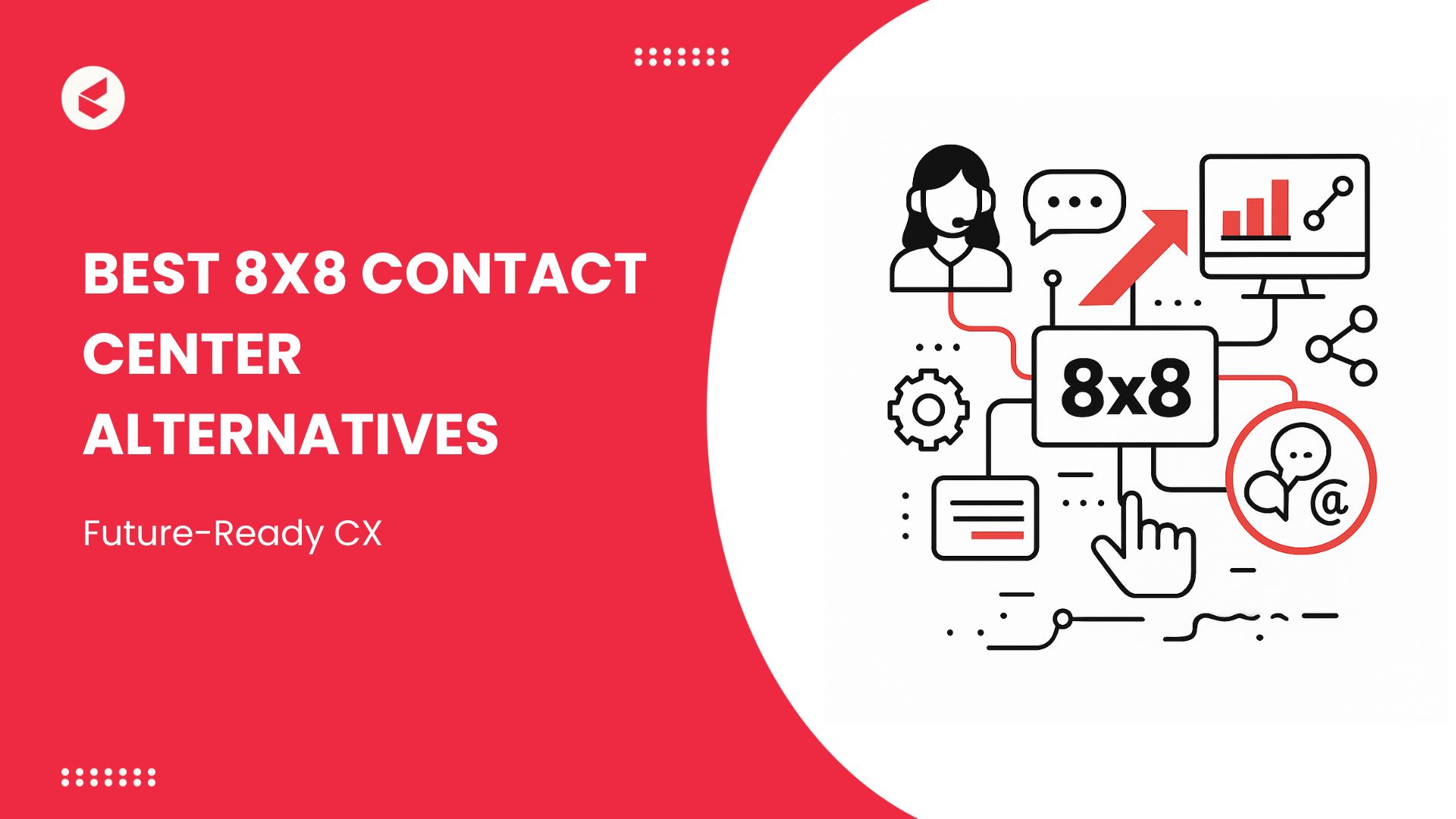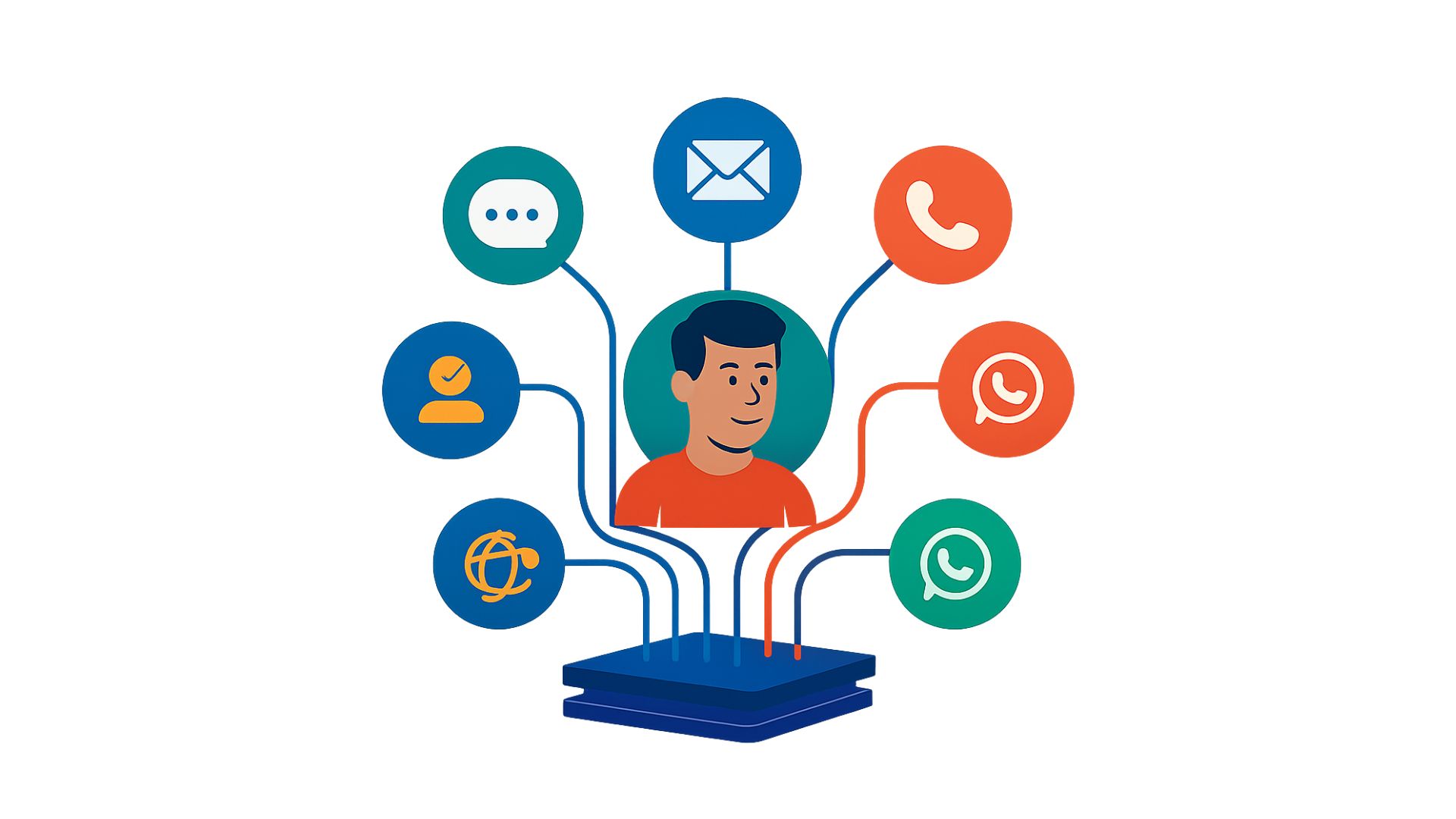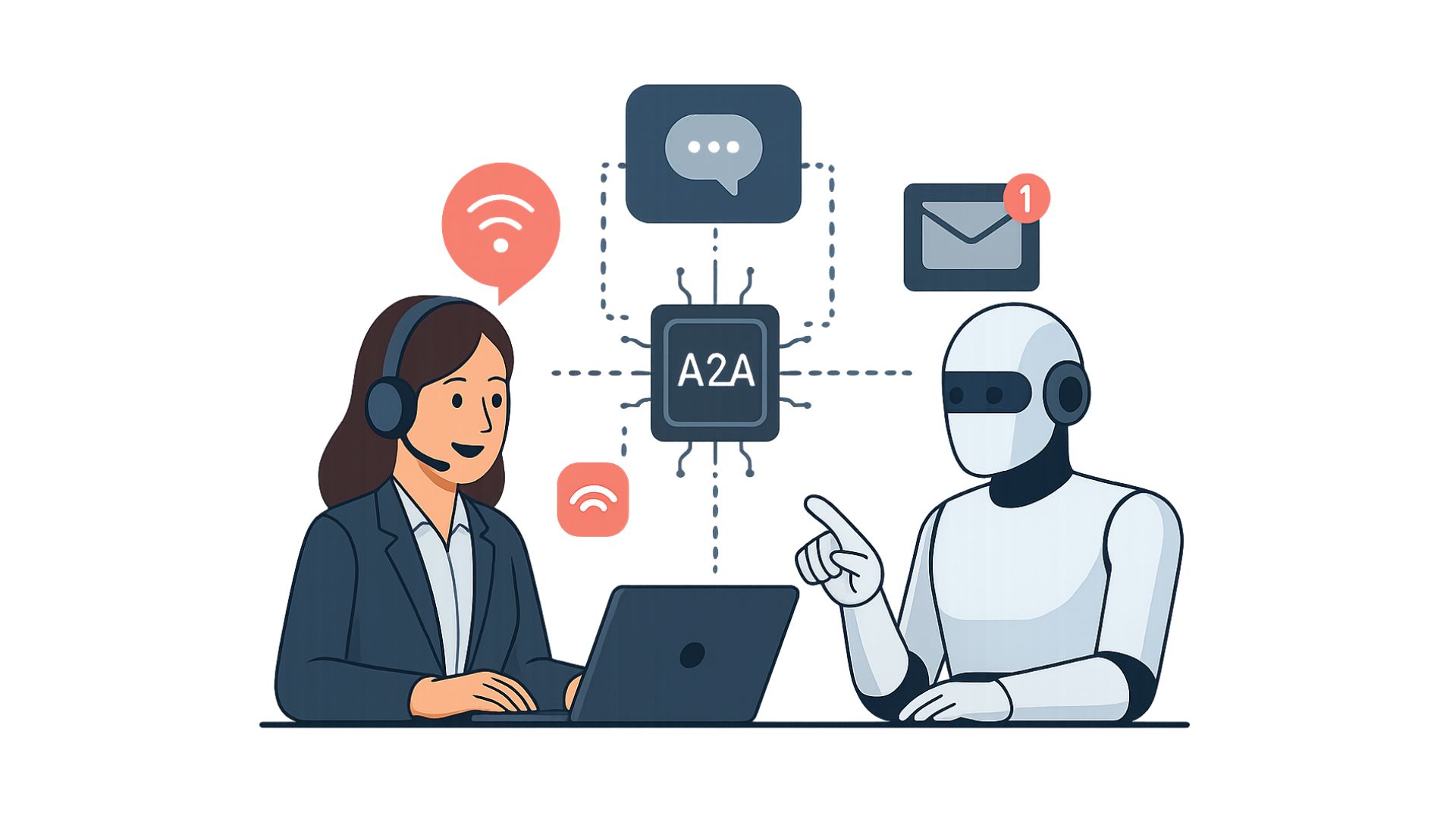The ability to respond to customers’ calls, resolve their issues faster, and not keep them on hold are all essential to excellent customer service. Average handling time, or AHT, is a metric that measures how quickly you respond to customer calls.
Measuring AHT helps you to keep a check on the long hold times, futile conversations, unnecessary back and forth, and other inefficiencies that stretch the resolution process.
There is a catch though and that is AHT must always be considered in conjunction with other measures and never alone. In our blog, we discuss this and more.
What is the Average Handle Time?
Average handle time is an important metric used in contact centers that measures the average time taken to complete a transaction. It accounts for all talk time, hold time and post-call tasks that agents perform in the course of resolving tickets.
Furthermore, building tactics that focus solely on lowering AHT can lead you to brush aside the demands as well as expectations of your customers.
Why is Average Handle Time Important?
AHT is a highly important indicator that assesses the efficiency of your customer service department and acts as a benchmark for setting customer service objectives. Agents must seek to minimize their AHT because it will benefit businesses in the following ways,
1. Provide a Better Customer Experience
To deliver a pleasant customer experience, it’s essential to respect your customers’ time. When AHT establishes a benchmark that encourages the agents to handle customer calls, they will have a clearer understanding of the dos and don’ts to manage calls more successfully.
As a result, customers experience a quicker resolution of issues, which increases customer satisfaction.
2. Improve Contact Center Efficiency
By looking at what drives up the AHT, you will know if your current number of agents can keep up with your average call volume. The AHT prompts you to investigate the reasons why customer calls take longer to handle, including factors like long hold times, customer callbacks, and other aspects.
You can increase the effectiveness of your contact center by streamlining your processes and getting rid of the shortcomings.
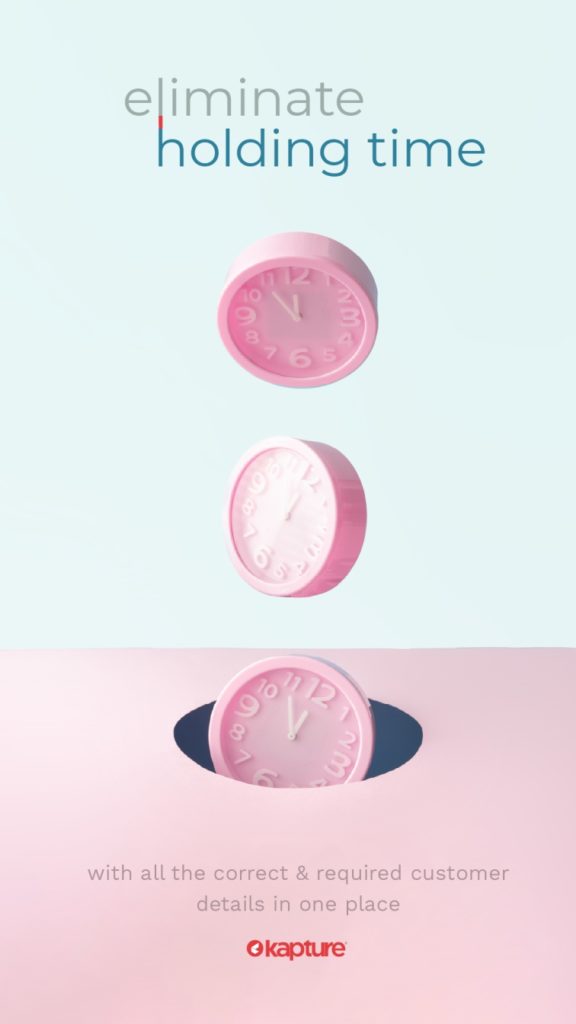
3. Reduce Operational Costs
Lower AHT translates into more calls answered each day, more issues fixed, and cost savings due to the time saved. You can slash expenses on overtime and extra labor.
What is a Good Average Handle Time?
Take note that too small an AHT would not account for happy customers as it would have agents rush through the query resolution process. The AHT should neither be too high nor too low but must be maintained at an optimal value that strikes a balance between the needs of the customers and the best of what you are capable of delivering.
The average handle time as per industry standards is 6 minutes 10 seconds. The real AHT must be viewed as coupled with higher customer satisfaction. If all you focus on is lowering the AHT, you risk receiving poor customer service ratings.
Here is an example:
Service Agent 1: Total talk time – 300 secs, After Call Work – 30 secs
Service Agent 2: Total talk time – 270 secs, After Call Work – 60 secs
Total number of calls handled – 100
AHT for agent 1 = (300+30)/100 = 3 mins 30 secs
AHT for agent 2 = (270+60)/100 = 3 mins 30 secs
How can you tell whether agent 1 or agent 2 provided a better customer experience when both representatives had the same AHT?
Clearly, through customer satisfaction surveys.
How to Calculate AHT?
Add up the time spent on calls, on holds, and post-call work, then divide the sum by the number of calls.

Image: Source
You take into account the meantime the agents spend resolving a query both during and after the call when calculating AHT.
AHT can be computed for individual agents, a department, or the entire contact center.
Following is a list of the factors that influence AHT:
- Talk time is the total time your representatives converse with customers.
- Hold time is the average time customers spend awaiting the agent to attend to them.
- The term “after-call work,” or ACW, refers to all the duties that customer service must carry out after each customer interaction.
Some of the ACW responsibilities are:
- Logging the contact reason and summaries.
- Scheduling and carrying out follow-up actions
- Updating your CRM and/or help desk.
- Looking into customer feedback.
The total amount of time an agent spends on ACW is referred to as “wrap time” or “wrap-up time.”

Image: Pattern of contact center agent’s working day
What Causes High AHT?
Non-value-added activities have been identified as the contributors to a longer AHT in call centers. Here’s what to blame,
Extended Greetings: Long opening or closing statements and unnecessary sign-offs increase your AHT. Agents can be professional and cordial but not excessively. The emphasis should be on being watchful of customers’ time and eliminating trivial conversations.
Improper Probing: Asking irrelevant questions to customers.
Repeated Customer Interactions: This happens when all the information is not provided in one instance. When customers have to call more than one agent and describe the same issue, your AHT shoots up with all the in and out calls.
Lack of Product Knowledge: Agents who are poorly trained lack proper knowledge about your product or services.
Search Time for Information: When information is not easily found by agents in the database, AHT increases.
Lack of Omnichannel Routing: Omnichannel routing helps customer queries reach the right agent irrespective of the channel the customers use to contact the agent. This helps avoid unnecessary holds and non-expert help which leads to inflated AHT.
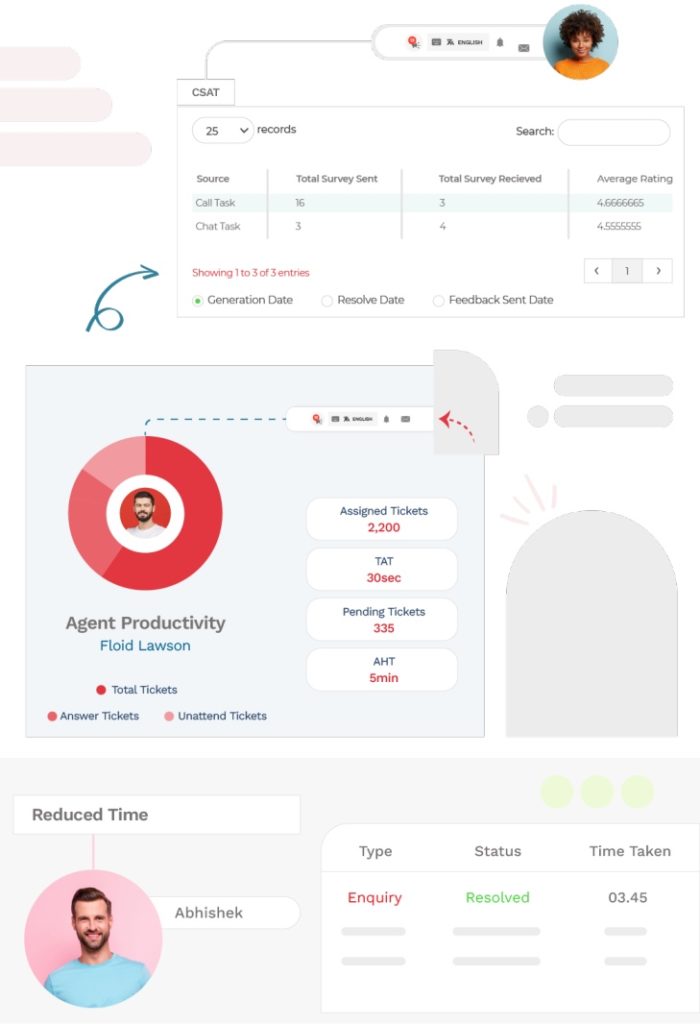
Higher Wrap Time: Some of the ACW can be completed within the contact center application, which will decrease wrap time and, in turn, AHT. When you use a contact center solution, the details of each customer interaction are automatically saved in the database.
Agents can also add notes or have conversations with third parties while keeping everything attached to the ticket. It can assist in reducing your AHT when agents do not have to switch systems to complete the after-call work.
How to Reduce and Improve Average Handle Time?
There are many strategies you can employ to shorten the average handle time, but you must be careful because doing so below the optimum limits can degrade the quality of your customer service.
Here are a few methods for reducing average handle time without sacrificing customer service standards.
1. Train Agents
The effectiveness and speed with which your agents address customer issues impact AHT. Agents need to be familiar with how to use your resources, including your business tools, policies, and guidelines.
Agents that are inept and ignorant about your products and services are a drawback. Lack of proper training for the agents is the main cause of this. Such agents are more likely to louse up the calls, frittering the time of the customers and damaging the reputation of the company.
A learning management system can be used to fulfill your agent’s upskilling, training, and onboarding needs. Agents can sign up for classes, take tests, and study at their own pace using this. Supervisors can administer tests, keep an eye on underachievers, and suggest remedial action.
2. Optimize Call Routing
Calls can be routed to the right agent to decrease AHT since it eliminates time lags that result from rerouting or transferring calls.
For example, you can direct a customer’s request from a certain category to an agent who is knowledgeable about that subject. By doing this, the average length of calls will be shortened and time lags caused by call transfers will be eliminated.
Kapture’s contact center solutions automatically route calls to the appropriate agent based on parameters such as skill, location, availability, and so on.
3. Build a Knowledge Base
An extensive knowledge base filled with articles can be quite helpful to the agents because it gives them instant access to how-to manuals and all the necessary information.
Kapture provides an agent help feature through an “Agent Assistance” window integrated into their contact center solution.
The virtual agent driven by artificial intelligence accepts questions from agents and responds with contextual information. With easy access to knowledge, agents can offer the appropriate solutions to customers quickly.
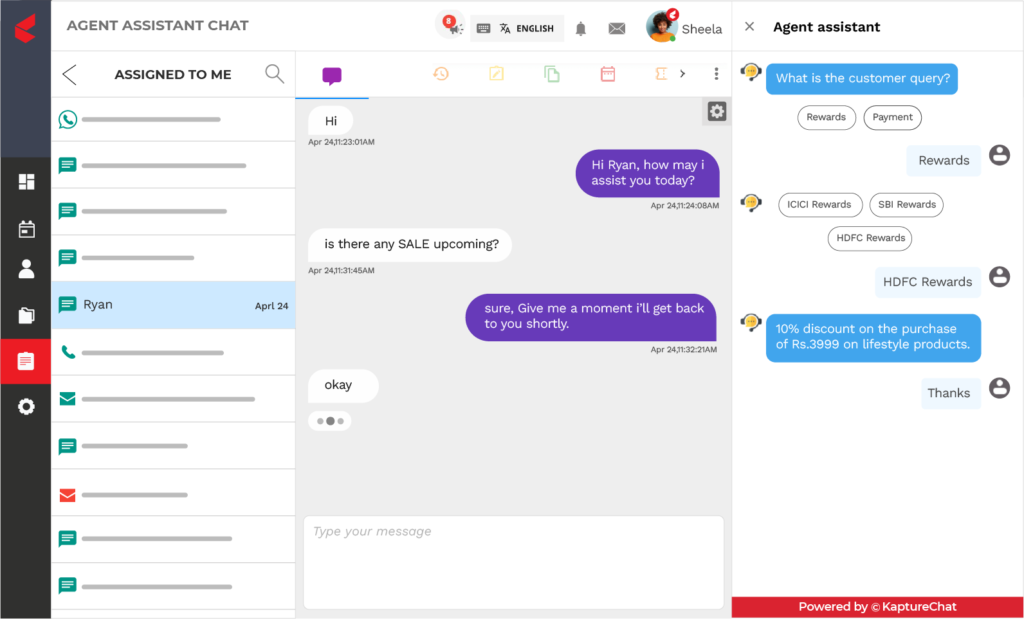
4. Enable Internal Communications
There will inevitably be situations where agents have to collaborate with their peers and it comes most favorably when they can exchange ideas within their workspace. Kapture’s side conversation feature lets agents discuss their concerns with or agents.
Therefore, if answering customer inquiries requires you to seek feedback from coworkers or a third party, you do not have to log in to separate systems for this. You can have the multiple interactions organized and attached to your ticket as well.
5. Record Calls
It is a good practice to record calls to identify gaps and improve efficiency. Agents can review recorded calls to get a better perspective of the real-time call scenarios. This would help them gain an upper hand in optimizing the call handle times, by being more prepared to avoid common snags that happen during the calls.
6. Leverage Workflow Automation
One of the reasons for a larger AHT could be due to call transfers between different departments, adding unnecessary minutes to your AHT. Leveraging smart workflow automation is a solution. You can improve your workflow by automating repetitive tasks so that your service agents can focus on the most challenging tasks.
Choose a solution that best fits your business needs with easy configuration capabilities for workflow automation and that integrates with existing systems.
Kapture’s contact center solutions automate your customer support process from start to finish and is a powerful tool to improve your AHT.
7. Monitor Agent Performance
Agents require ongoing supervision and guidance. Monitoring new hires enables you to spot training gaps and fix errors before they become routine.
Recording customer service calls and analyzing them helps you uncover the root causes for longer calls. With the use of a specialized analytics tool and dashboard, you can gauge how your agents and business as a whole are doing.
8. Identify the Root Cause
Call monitoring can help you identify the primary factors contributing to the rise in AHT. Tools for reporting and analytics can be used to find hold times, patterns, problems, or other areas that are contributing to extended AHT.
Kapture: Your Solution for a Lower AHT and Higher Customer Satisfaction
The bottom line, reducing average handle time is about optimizing your processes to provide a great customer experience and not merely watching the pennies.
If you are looking for ways to reduce your AHT, equip your agents with Kapture’s innovative and smart collaboration tools that speed up resolving issues in real-time.
We assist you in maintaining the optimum AHT while keeping a close eye on customer satisfaction and delight.
About the Author | |
 | Seema C Mohan |
| Seema C Mohan is passionate about all things XaaS and loves to write value-added content. She has been in Business Process Management in the past and has published technology articles in journals. | |
,
,
,
,
,
,
,
,
,
,
,
,
,
